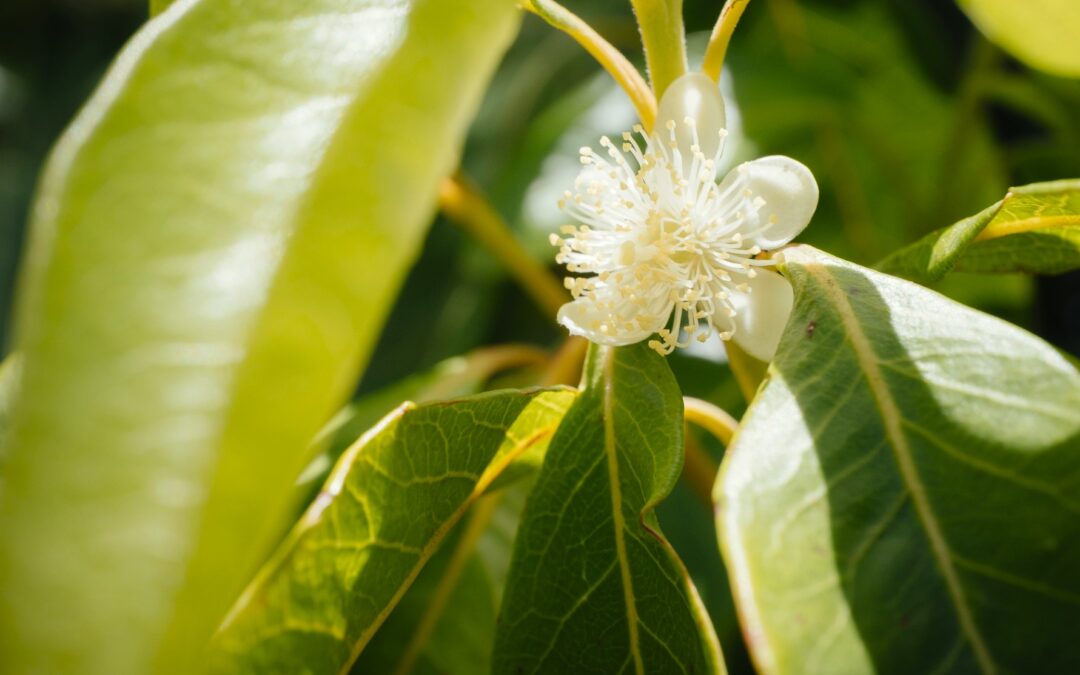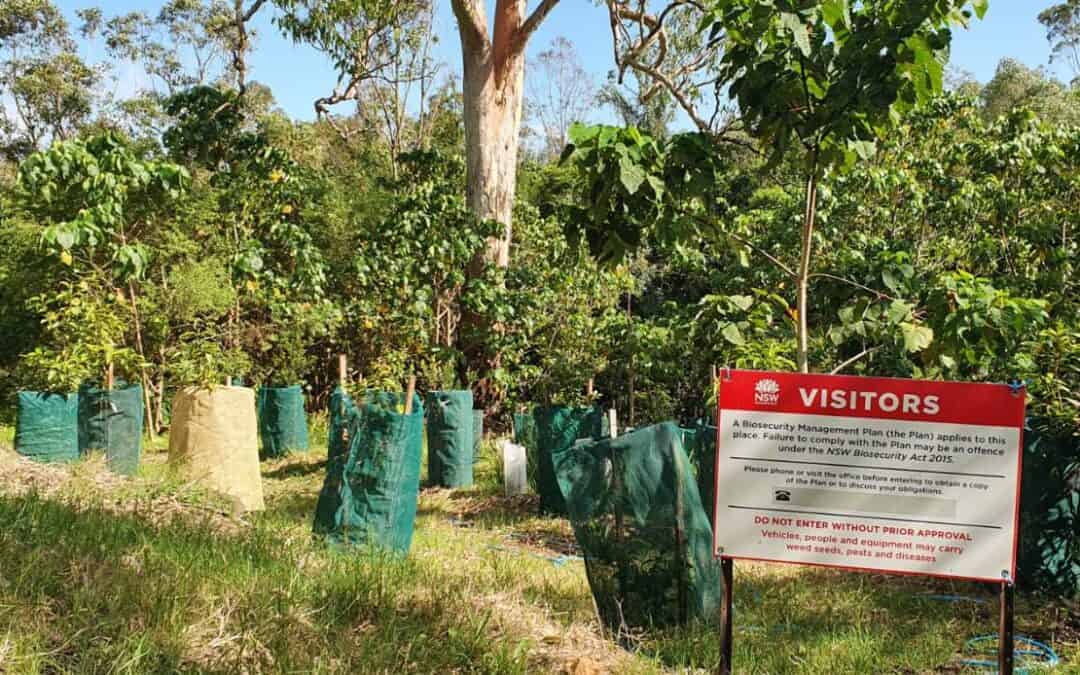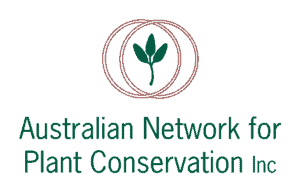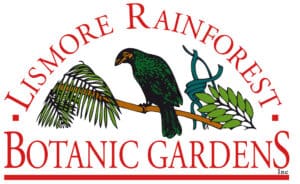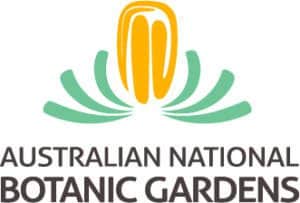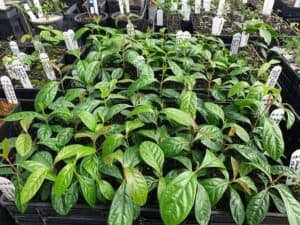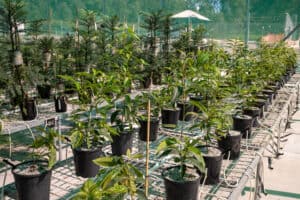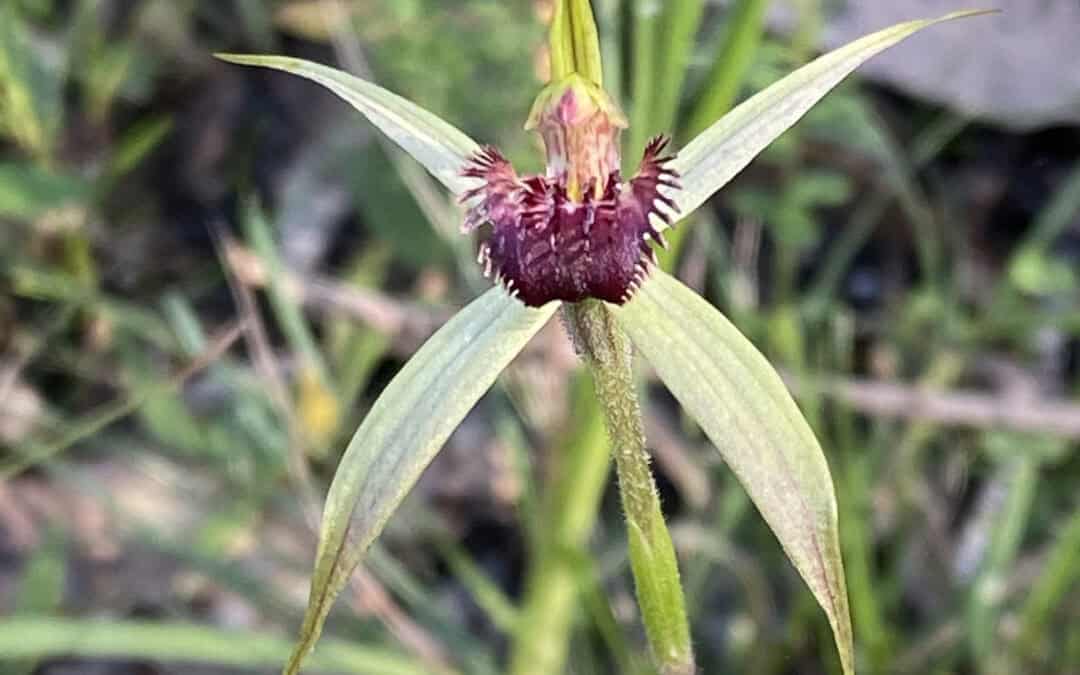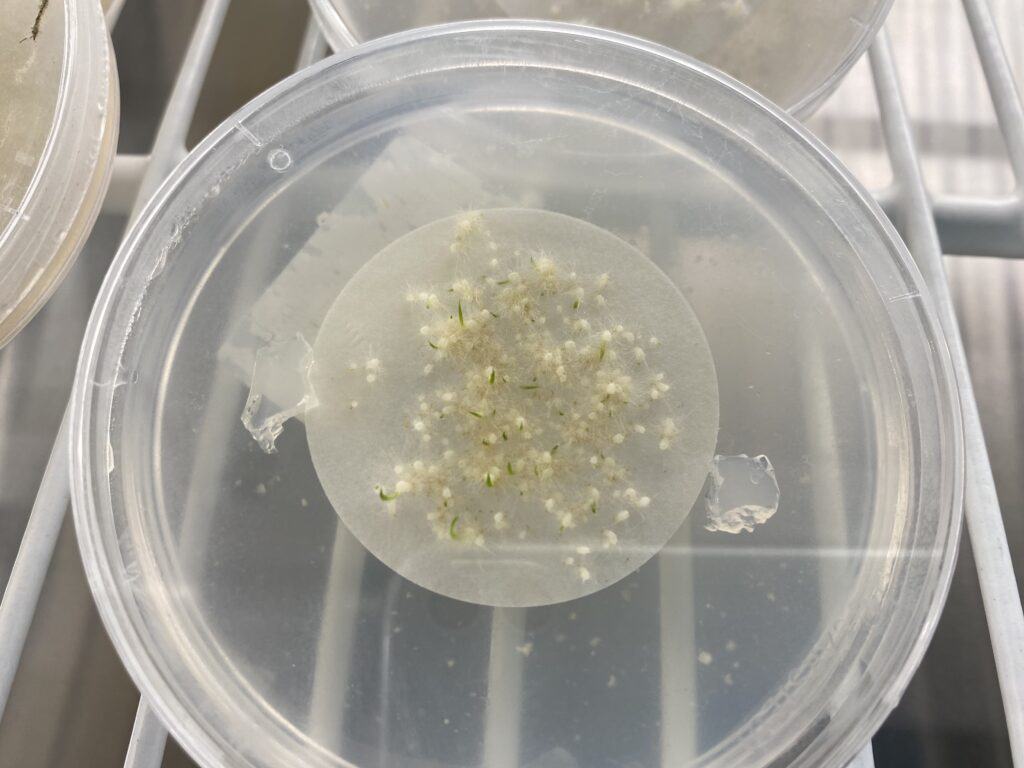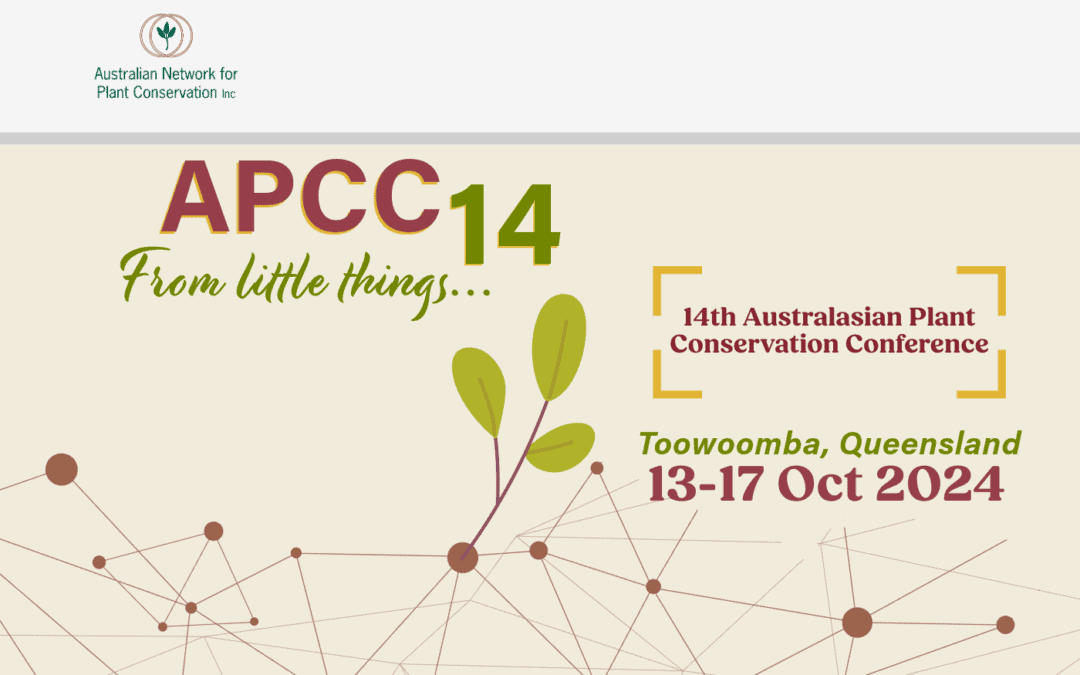
Sep 5, 2024 | News
Are you passionate about the conservation of our threatened native plants? Use your excellent interpersonal, communication and organisational skills to:
- work collaboratively with a diverse team of professionals to coordinate planning and delivery of a complex program.
- deliver a complex project/set of tasks in a timely manner, with minimal supervision, and work within strict deadlines.
- prepare communications materials for a broad range of audiences, including technical documents, reports to funding bodies, and communication documents for a general audience.
Location: to be negotiated (options include work from home office or possibly hosted by an appropriate organisation or agency, or a mix)
Salary etc: $75 per hour (includes leave loading) + 11.5% super. 27 hours/week for 18-month contract.
About the role: In this new position, you will coordinate recovery actions for four EPBC-listed Critically Endangered Myrtle Rust affected plant species: Rhodomyrtus psidioides (Native Guava); Gossia gonoclada (Angle-stemmed Myrtle); Rhodamnia rubescens (Scrub Turpentine) and Rhodamnia maideniana (Smooth Scrub Turpentine) through the formalisation of a current consortium, plus new partners, into a Recovery Coordination Team and:
- Facilitate agreement on, and coordinate delivery of, priority activities in the recovery program, through supporting effective operation of the Recovery Coordination Team.
- Identify resourcing needs and potential operational sources for these, and potential future partnerships, for ongoing progress (beyond life of this project) for recovery of the target species.
- Report on progress towards target species recovery and consolidation of working partnerships, concordant with relevant Australian Government reporting requirements for registered Recovery Teams.
- Provide secretariat support to the Recovery Coordination Team.
- Prepare and circulate communications updates for the Recovery Coordination Team, including recording and circulating meeting minutes, and recovery action program update for distribution to the broader stakeholder network. Assist the Chair in the preparation of other whole-of-program communications materials and documents as required.
- Maintain accurate records of team membership, actions and the progress status of actions.
- Facilitate internal and external consultation processes for the Recovery Coordination Team.
To be successful in this role, you will need a Bachelor’s degree or equivalent in natural sciences, advanced experience in threatened species management and recovery, demonstrated familiarity with fundamental documents on the Myrtle Rust problem and demonstrated understanding of issues and policies in plant conservation at species and ecological community level. A knowledge of plant conservation techniques and a willingness to travel and work flexibly to meet the needs of the program are also essential.
Background: Since its introduction to Australia in 2010, the exotic fungal disease Myrtle Rust has put 20-40 Myrtaceae species at risk of near-term extinction or serious decline. The Australian Network for Plant Conservation (ANPC) has played a key role in national Myrtle Rust matters since 2011, maintains a comprehensive information hub and was instrumental in developing the 2020 National Action Plan for Myrtle Rust (NAPMR) which is the action template for Myrtle Rust-affected species used by Commonwealth, States and researchers. The conservation path entails emergency germplasm capture, ex situ conservation, the selection of rust-tolerance traits, and eventual reinforcement or reintroduction of populations in the wild. Over the last 2 years, along with many partners including government departments and botanic gardens, the ANPC established a successful pilot dispersed-custody model for Native Guava with representative sampling and propagation of surviving wild germplasm, genetic management and communications/training activities, and commenced some actions for Scrub Turpentine.
Who we are: The Australian Network for Plant Conservation (ANPC) is a national not-for-profit organisation with a mission to ‘Promote and develop plant conservation in Australia ‘. We are a membership based organisation that’s been around since 1991. We work with a wide range of stakeholders including botanic gardens, local state and federal governments, research institutions, other NGOs, practitioners and community groups.
What we do: The ANPC brings people together (such as scientists, researchers, land managers, consultants, volunteers and students) from across Australia to collaborate, network and share information in an effort to conserve our native plant species and vegetation communities, prevent further extinctions and restore our natural areas and biodiversity. To achieve this we:
- hold training workshops, webinars and conferences.
- publish guidelines such as how to propagate and translocate threatened plants back into the wild.
- promote plant conservation and publish a quarterly journal Australasian Plant Conservation (APC).
- coordinate high priority projects with multiple stakeholders such as this project.
How to apply:
Your Expression of Interest should address the selection criteria in no more than 4 pages, and separately include your CV with the contact details for two referees.
Please send your Expression of Interest to the ANPC Business Manager by COB Friday, 20 September either via email: or by post to:
Australian Network for Plant Conservation
GPO Box 1777
Canberra ACT 2601.
For more information, please email one of the following ANPC management committee representatives:
- Caroline Gross
- Bob Makinson

Aug 30, 2024 | News
 The NSW Department of Climate Change, Energy, the Environment and Water funded an extension to the ‘Safe Custody for Native Guava‘ project for the 2023/24 financial year, with the following results:
The NSW Department of Climate Change, Energy, the Environment and Water funded an extension to the ‘Safe Custody for Native Guava‘ project for the 2023/24 financial year, with the following results:
- Continued monitoring of the already-dispersed Native Guava (Rhodomyrtus psidioides) collection, with all plants in excellent health and fruit production at 3 of 5 locations.
- A total of 91 plants from 34 unique genetic lineages of Native Guava have now been dispersed to partner gardens.
- A total of 16 plants from 8 genetic lineages of Scrub Turpentine (Rhodamia rubescens) were dispersed to 5 gardens including new partner Booderee Botanic Gardens.
- Continued integration of germplasm collection, dispersal and monitoring activities between QLD and NSW, including collection of genetic material from healthy R. psidioides appearing in response to drying climate.
- Continued and improved EpiCollect app training and monitoring of the ex situ collections at all partner locations enabling spatial aggregation of flowering, fruiting and health data.
- Collection of Native Guava and Scrub Turpentine fruit being sent to Botanic Gardens of Sydney for storage and viability testing.
- Genetic material collected from healthy Rhodamia maideniana and Rhodamia whiteana plants observed in the field and sent for additional genetic analysis.
- Ongoing monthly meetings of the Myrtle Rust Consortium where members networked and shared information, discussed issues and lessons, gave presentations and reported on germplasm collection, propagation, planting, research findings and maintenance of the ex situ collections. It also facilitated the submission of collaborative grant applications.
- Collaboration with UNSW and the BGANZ Collections and Records Management group (BCARM) on a quarterly series of informal virtual get togethers, the “Myrtle Rust Management for Practitioners – open series” which commenced in February 2024, focusing on practical aspects of managing and maintaining a conservation collection of Myrtle Rust susceptible species.
- Updating of the ANPC’s Myrtle Rust Hub.
- Updating of the Myrtle Rust ID and collection methods brochure.
- Development of an outreach partner garden flyer explaining the project, for the general public when visiting the ex situ collections and which can be used for guided walks.
- Flyer explaining ReCER resistance screening trial was developed and installed at ABG Mt Annan
- Preparation to publish a paper on the establishment of emergency conservation collections and subsequent dispersal of safe meta collections which is, to our knowledge, undocumented in publicly accessible literature.
The planting of the collections in-ground has been extremely successful with only 3 deaths reported from the 107 distributed plants, with these replaced. All deaths were accidental/human induced, one due to watering failure, one was broken during transit and a third damaged by grazing after fence damage.
EpiCollect monitoring over the course of the project determined that control of Myrtle Rust infection was very successful but frequent application of fungicide was required in the high infection zones. Monthly monitoring reported 77 instances of planted Native Guava plants flowering (the majority of which occurred in Summer 2023) and 128 instances of fruit production (the majority of which were in Summer and Autumn 2023). 22 of these fruits were mature. A total of 6 Scrub Turpentine fruit were recorded (2 in Summer and 4 in Autumn 2024) and 1 instance of flowering was recorded. The production and collection of mature fruit will be critical to the conservation of both these species.
ANPC Project Manager Chantelle Doyle coordinated this project.
Read this Botanic Gardens of Sydney blog piece written by Chantelle to find out more about how ‘genetics is helping to save plant species decimated by myrtle rust’ dated 28 July 2023.
Thank you to all our partner organisations for their generous support and commitment to this project:








Main image: Native Guava plants at Lismore Rainforest Botanic Gardens. Credit: Chantelle Doyle


Native Guava plants growing at the Australian Botanic Garden Mt Annan before dispersal. Credits: Veronica Viler (L) and Nathan Emery

Jul 15, 2024 | Events Category, News
APCC14 Special Guest Speaker announcement!
Costa Georgiadis will be making an appearance at the conference and giving what’s sure to be a very entertaining and illuminating talk on how to get more people interested in native plants and their conservation.
Costa almost needs no introduction. He is a landscape architect, environmental educator, author and has been a presenter of gardening television shows for decades, starting as co-creator and host of Costa’s Garden Odyssey on SBS before becoming a host on ABC’s iconic Gardening Australia program in 2013, continuing to this day.
Beyond the screen, Costa is heavily involved in promoting the importance of biodiversity and preserving habitat, through sustainable gardening and land management. He is a prolific public speaker and an Ambassador for Junior Landcare, sharing his knowledge with a wide variety of audiences. He lives and breathes gardening, relishing the natural world and our connection to it.
You can learn more about the conference and register at the conference webpage: https://www.anpc.asn.au/conferences-apcc14/

Jul 4, 2024 | News
Less than 40 plants of the Critically Endangered Caladenia ancylosa (Genoa spider orchid) remain in two populations in the wild.
Royal Botanic Gardens Victoria (RBGV) scientists have been growing more than 200 seedlings this year from seed collected post the 2020 mega fires. Seed has been grown symbiotically with mycorrhizal fungi which is required for germination.
RBGV and La Trobe University Scientists this Spring will be doing pollinator studies, to locate suitable sites for future translocations and unravel any pollinator sharing that may occur with closely related species. Surveys for this species are planned in East Gippsland this Spring as part of the ‘Preventing the extinction of Victoria’s threatened flora project’ led by Royal Botanic Gardens Victoria.

Caladenia ancylosa seeds – Credit: Noushka Reiter
This research is funded by Department of Energy, Environment and Climate Action‘s Nature Fund.
The ‘Preventing the extinction of Victoria’s threatened flora’ project is led by Royal Botanic Gardens Victoria in partnership with La Trobe University, Australian Network for Plant Conservation, DEECA, Trust for Nature, Wimmera Catchment Management Authority, Nillumbik Shire, ENVITE, Bairnsdale & District Field Naturalists Club, Friends of the Grampians Gariwerd, WAMA Botanic Gardens, Halls Gap Botanic Gardens and the Australasian Native Orchid Society Victorian Branch.
Feature image – Credit: Noushka Reiter

May 10, 2024 | News
QTPN Project Manager Paul Donatiu has provided his first monthly update on how the network is progressing. A summary of the update is:
DESI Threatened Species Operations are currently working with the Stanthorpe Rare Wildflower Consortium to draft Recovery Action Plans (RAP) for Eucalyptus dalveenica and Grevillea scortechinii subsp. scortechinii, two critically endangered species. A multi species RAP which includes 12 plant species for Blacktown Tableland and adjacent state forests has been initiated.
Paul visited Trees for Evelyn and Atherton Tablelands (TREAT) and the QPWS Nursery at Lake Eacham in North Queensland. You can find out more about TREAT at: https://www.treat.net.au/.
In exciting news, we have also welcomed our first 10 member organisations to the network! We would like to thank them for their support.

To learn more about the QTPN, visit: https://www.anpc.asn.au/queensland-threatened-plant-network/
For information on joining the QTPN or other enquires, Paul can be contacted at: qtpn@anpc.asn.au

May 10, 2024 | News
Early bird conference registration and abstract submission for APCC14 are now available here.
Get in before July 26 to take advantage of our early bird pricing!

The conference will be held in Toowoomba, Queensland, from 13-17 October 2024 at the Oaks Toowoomba Hotel. Receive a 12% discount to stay at the Oaks! Just book via the Hotel’s website and enter the promo code OUREVENT.

Partner with us to make the conference even better! You can view our Partnership Prospectus here (pdf link). At the moment we are particularly looking for Bursary funding to support students and Traditional Owners to attend. The conference also provides an excellent opportunity to promote the profile of your organisation, including your involvement in plant conservation, to attendees from across Australia.

For more information about the conference, visit https://www.anpc.asn.au/conferences-apcc14/
